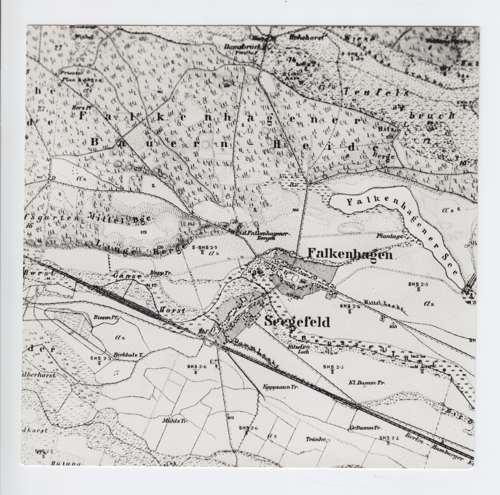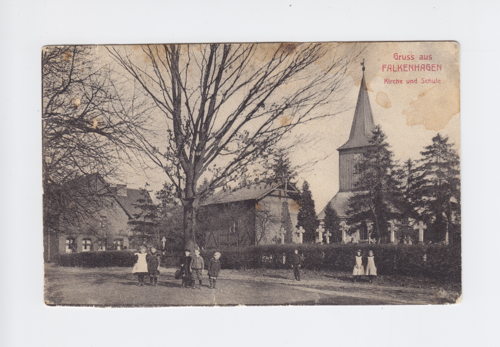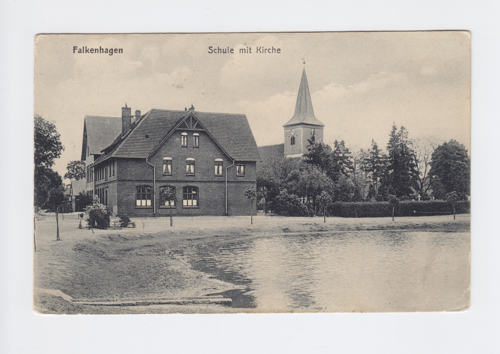The historical landmark
Falkenhagen(1)
In a document from the year 1336 the place Falkenhagen
was mentioned for the first time.
The distinctive Falkenhagener church and the adjoining
former school building characterize the eastern townscape. Until 1923 the village Falkenhagen existed. In the same
year, the community Falkensee was born. Falkenhagen was beside Seegefeld one of
the two villages, which were put together to the new large municipality
Falkensee. Even today clearly recognizable in the stem: from FALKENhagen and
SEEgefeld was on 1 April 1923, the large community FALKENSEE.
Location of the villages Falkenhagen and Seegefeld Rep. Messtischblatt "Section Rohrbeck"
(detail), 1868 Archiv Museum Falkensee
Church Falkenhagen
The first mention of a church can be traced back to the
14th century. After a great fire in 1675, the parish built a new church on the
remaining foundations in a five-year construction period. The weathervane on
the top of the church tower dates back to 1680. The Protestant church, once
with a pulpit altar, was later remodeled inside. The painter and graphic artist
Franz Haferland from Falkensee was commissioned in 1960 to create a
contemporary altarpiece
former schoolhouse
The schoolhouse built in 1897 in the immediate vicinity
of the church now houses the "Creative Center - Haus am Anger". In
the GDR until 1985, the former Polytechnic High School "Maxim Gorki"
was taught.
Monument to the fallen of the First World War
The Monument to the Fallen of the First World War
(1914-1918) was inaugurated in 1925. The stonemason H. Kubetschek from
Falkensee had built according to their own designs, the monument of Silesian
granite and Franconian shell limestone.
Church, around 1910 Postcard, Archive Museum Falkensee School with church, 1915 Postcard, Archive Museum Falkensee








